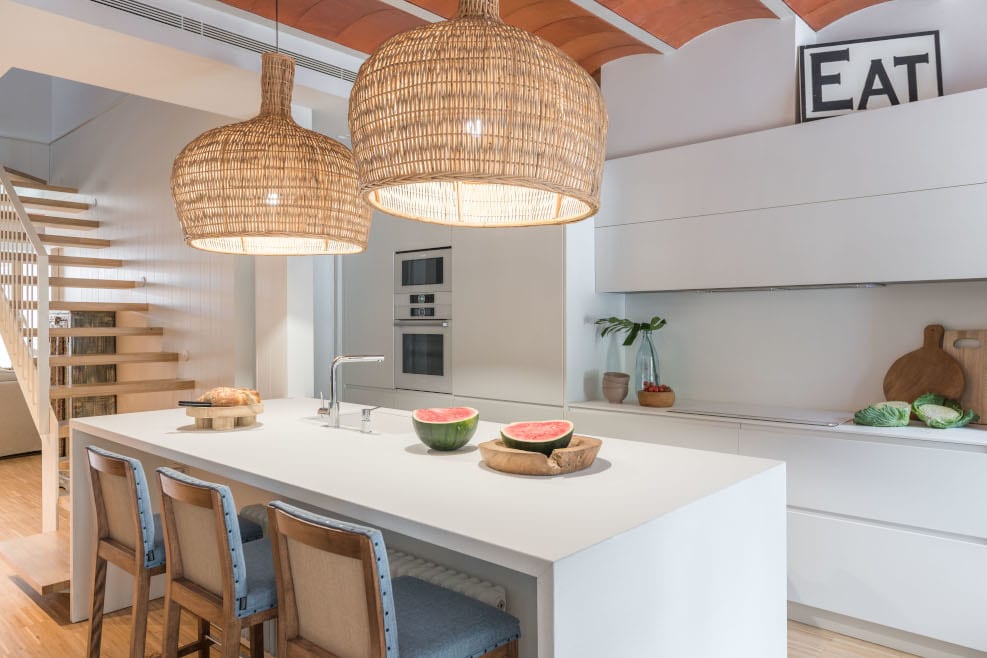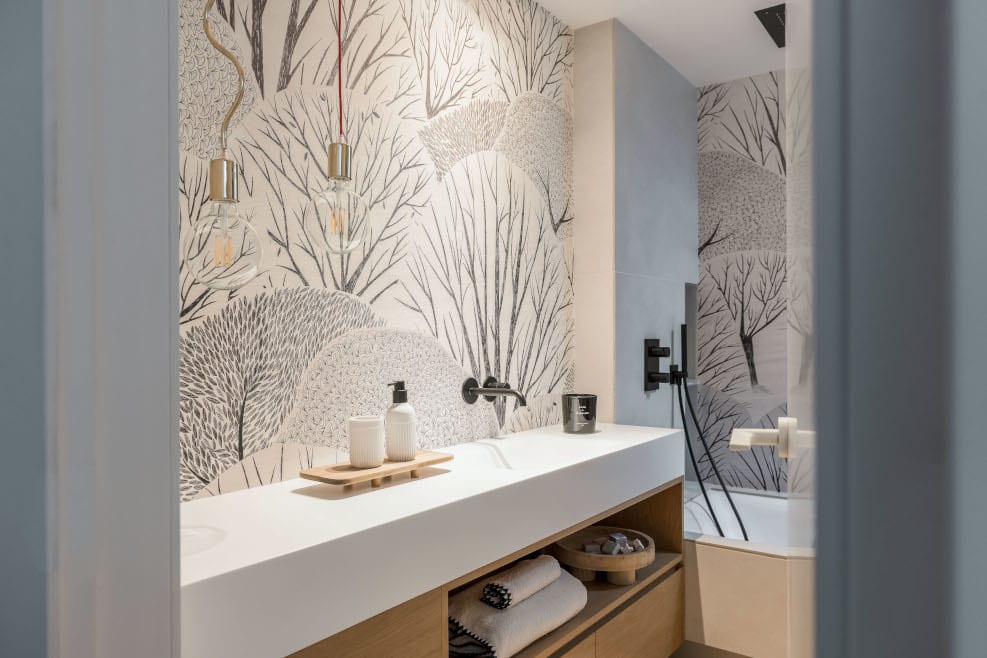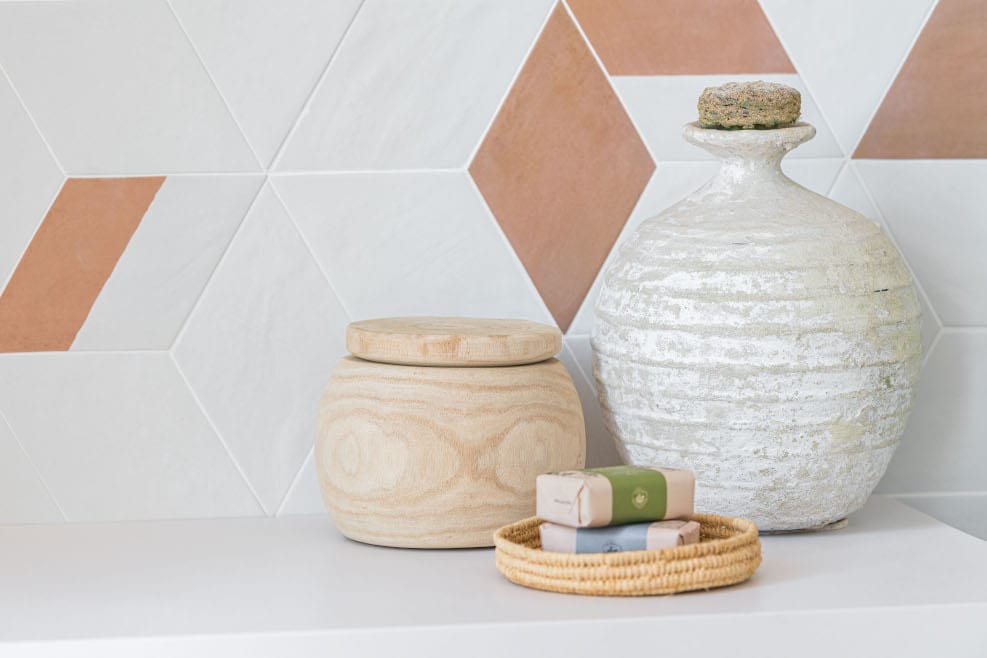Photo by Mercé Gost
Lapitec Enhances Mediterranean-Style Design
?
by Jennifer Richinelli
Surrounded by the enchanting landscape of the Catalan Coast, “MED” is the apartment owned by a painter and recently renovated by Maribel Caballero and Ismael Barajas of the Círculo Cuadrado studio. The renovation took place with total respect for the pre-existing architectural elements, such as the typical Catalan vaulted ceiling or the wooden front door – involving a complete rethinking of the layout to optimize the provision of natural light in the most lived-in areas of the house.
MED spreads over two levels. The living area is designed in an open-space layout, while the large sleeping area is accompanied by the owner’s creative atelier. Two captivating internal patios enhance the space. One with a dining area in exposed brick and micro- cement, featuring a covered and air-conditioned swimming pool. The second leads to the atelier and terrace, also equipped with a steel and ceramic pool, polarizing the spaces and offering secluded and very intimate open-air views. The Mediterranean style of the interior is conveyed through a multitude of factors, primarily the choice of materials and colors. The white walls and some of the furnishings emphasize the contrasts given by the wooden floors, the terracotta ceiling and the natural fiber of the intricately woven lamps – crafted by local artisans – as well as all the patterns in glass, wood, ceramic and linen. These elements are arranged around a palette of neutral or earthy tones, reminiscent of the Catalan landscape, with occasional touches of a cool sea blue in the bathroom area. The stylistic signature is typical of the Iberian Peninsula, combining contemporary accessories with salvaged elements that tell the story of the place.

Photo by Mercé Gost

Photo by Mercé Gost
Of central importance in the living area is the large peninsula kitchen of handcrafted design, a monolith that serves as a home-working station and seamlessly integrates into the architecture -- becoming part of the staircase leading to the upper floor. Embedded within it are the utility services and the heated towel rail. Crafted from Lapitec sintered stone – a 100% natural material – the countertop has been selected in a rough finish that, to the touch, recalls the texture of natural stone while providing the resistance and hygiene performance typical of cutting-edge materials. Indeed, Lapitec is scratch resistant, withstanding the effect of time and extreme temperatures, and it is non-absorbent on the surface, making it ideal for direct contact with food and facilitating daily cleaning operations. This Made in Italy material is also free of crystalline silica, ensuring the safety of those who choose it and all professionals in the supply chain. In conclusion, the rear area of the house, features a double-height ceiling and houses a reading and relaxation room. Part of the sleeping area also overlooks this space, which includes two suite bedrooms with dedicated private bathrooms and respective walk-in closets. In MED, every space is designed to capture the essence of the natural elements of the Iberian landscape and reflect them in a balanced space, imbued with an overall atmosphere of serenity. It's a project that narrates the Catalan style with a contemporary and international language.

Photo by Mercé Gost

Photo by Mercé Gost
Rod Sigman CTC, CCTS, CSMTT is the business development leader for MAPEI Corporation’s UltraCare® line of products for the care and maintenance of tile and stone products. Sigman has a proven track-record of success in the flooring industry, with experience in both training and education, as well as all support functions pertaining to national sales accounts and distribution. He has served on the technical committees of the National Tile Contractors Association (NTCA) and the Natural Stone Institute (NSI). He has successfully completed the Ceramic Tile Consultant Course, is a Certified Ceramic Tile Specialist (CCTS) and is also a Concrete Slab Moisture Testing (CSMT) Technician. Further, he was recognized by the Marble Institute of America (now the Natural Stone Institute) as a significant influence for the stone industry.

